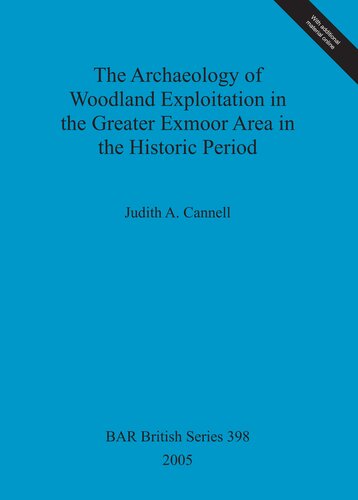

Most ebook files are in PDF format, so you can easily read them using various software such as Foxit Reader or directly on the Google Chrome browser.
Some ebook files are released by publishers in other formats such as .awz, .mobi, .epub, .fb2, etc. You may need to install specific software to read these formats on mobile/PC, such as Calibre.
Please read the tutorial at this link: https://ebookbell.com/faq
We offer FREE conversion to the popular formats you request; however, this may take some time. Therefore, right after payment, please email us, and we will try to provide the service as quickly as possible.
For some exceptional file formats or broken links (if any), please refrain from opening any disputes. Instead, email us first, and we will try to assist within a maximum of 6 hours.
EbookBell Team

0.0
0 reviewsThe subject of this work is the archaeology of exploitation of woodland on and around Exmoor, in south-west England. It fits into the existing body of research at three levels. Firstly, it attempts to analyse patterns of woodland management over a large area.In this respect, it forms part of a modern trend, with many writers on woodland now recognising the need to move away from histories of individual woods and adopt a wider perspective. Secondly, the area studied in this research is an upland and its fringes, with a dispersed settlement pattern, which is an environment of a type still under-represented in work on landscape development. In particular, work on woodland has, until recent years, tended to focus on the southern, eastern and central lowlands of England, which may have more centralised patterns of settlement. Thirdly, the geographical area selected for study, Exmoor and its fringes, saw relatively little sustained scholarly work until the 1990s, in comparison to other uplands of the south-west, and knowledge of its past land use has consequently been extremely limited. Perceptions of its woodland have been conditioned by the need to collect data for management purposes, generating a series of surveys and assessments carried out from the mid-1990s. The results of these surveys, which recorded a high level of archaeological features relating to woodland management, indicate that further progress can now be made by analysing and interpreting the data. The period covered by this research runs from the date of Domesday Book (1086) to the early 19th century.